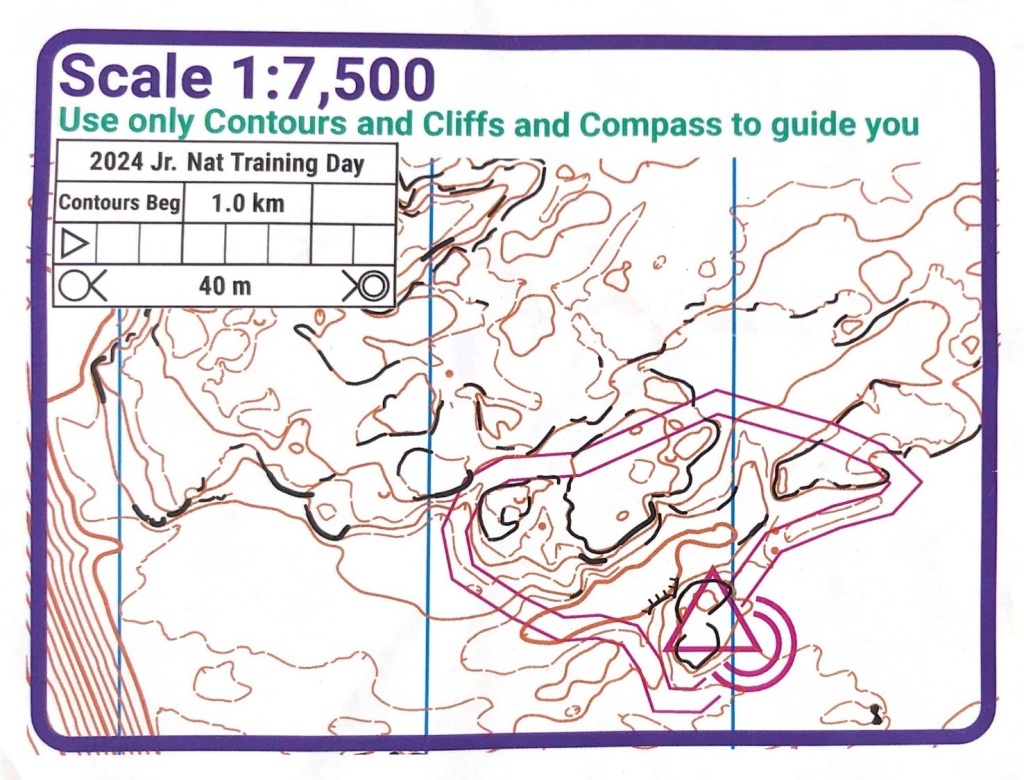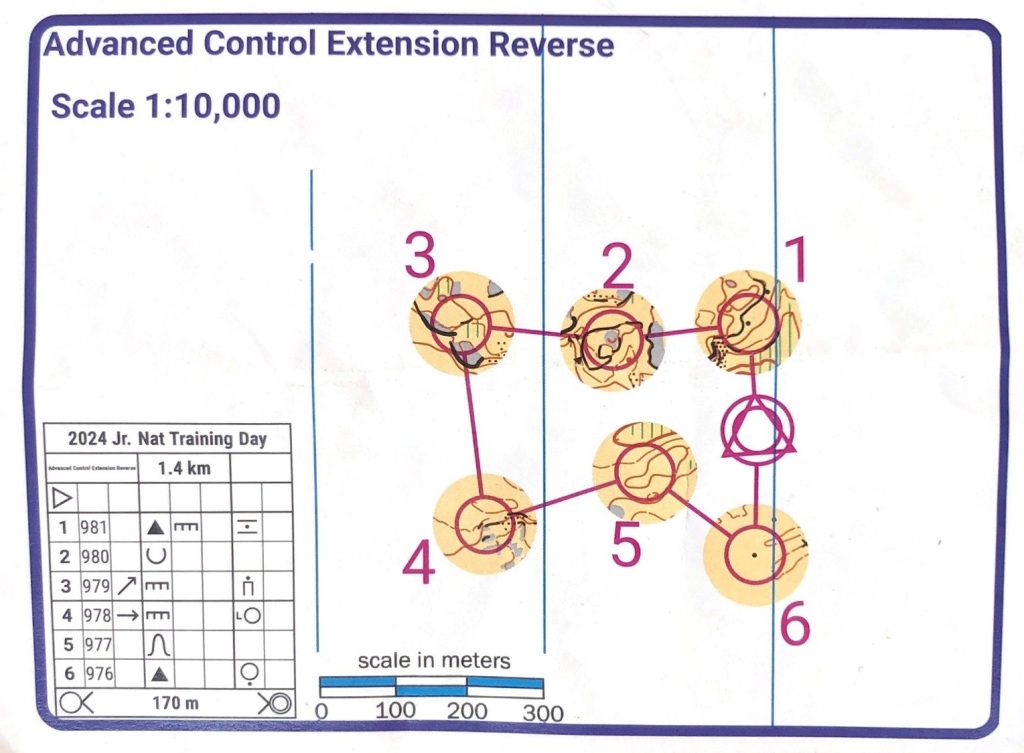Hello juniors and supporters,
Please enjoy some last-minute map study and advice from our local juniors about how to best navigate the terrain we will see this weekend at Junior Nationals in Quincy, Washington.
Junior Squad members Greta L., Ben C., Ben C., Jackson R., and Ben B. all came out to Frenchman Spring for a training day hosted by John Brady last weekend. This map is in the same area as the model map for the event, adjacent to Friday’s Frenchman Coulee map, and highly relevant to the upcoming races.
I asked these five for their two cents on navigating in the desert terrain.
Greta says: “My go-to for navigating in eastern Washington is compass and pace count in relatively featureless areas. I also have found it quite helpful to use cliffs as handrails especially when staying below them. In my opinion, navigating well in scabland terrain requires a lot of focus on features that are less obvious than in other places I have orienteered.”
Below is an exercise we did on Saturday, where contours, cliffs, and compass skills were crucial for completing the course.

“Vegetation is definitely useful, it can be seen from a distance and there isn’t a lot of it. Also check out the post Zoe S. made to her attackpoint, it has tons of information.” – Ben Conley
Zoe’s post from March 18th is titled “Zoe’s Free But Rough and Potentially Inaccurate Guide to JNats Venues.” It is indeed free, and brilliant. Zoe is a team player like no other.
“My advice for navigating the terrain we will see this weekend at Jr. Nationals is to know when to run fast and when to slow down. All three maps have extremely dense clusters of features and wide-open sloths of land with almost no features right next to each other. Knowing when you can go full speed is important to maximize the course, but if you don’t slow down when necessary, overrunning your checkpoint is a guarantee.” – Ben C.
I think Jackson R.’s advice is critical to keeping up your speed in the terrain: “Stay confident in your bearings and directions, don’t get pulled off by smaller features or other flags.”
Here is an exercise we did that is meant to keep you running fast until you reach your control circle, when you need to start reading your map closely. The keys here were a good bearing and solid pace count.

Finally, Ben B. says: “simplifying the map by using the large, easily-visible features will be key for many legs.”
At the end of the day, the juniors pulled all these skills together to complete a full course.

Thanks for reading!
Coach Caroline